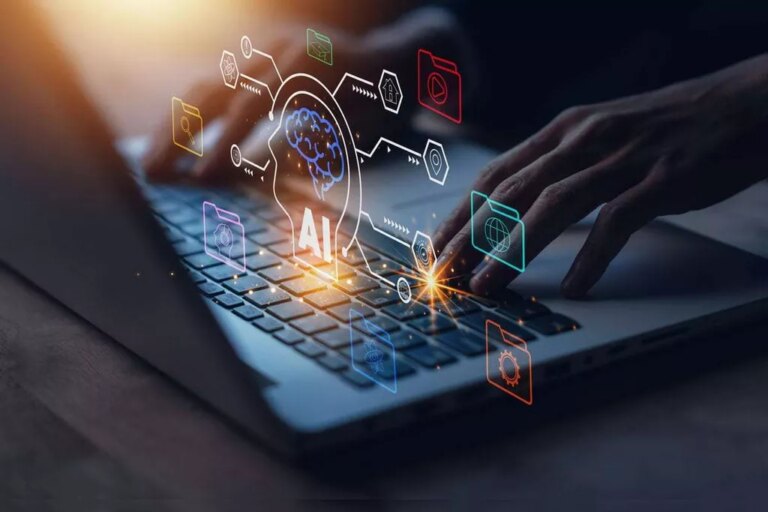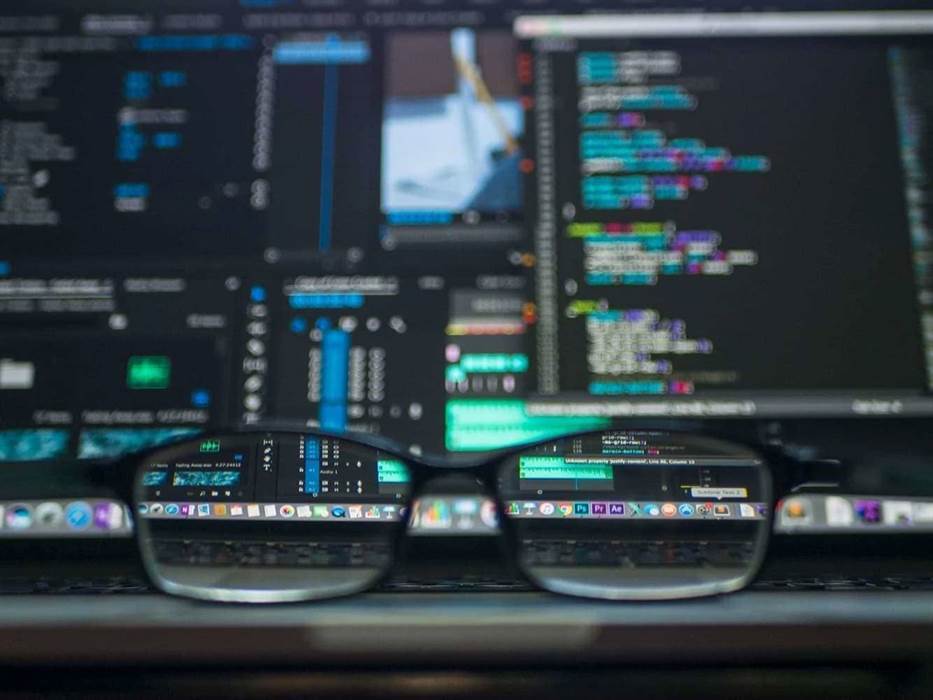Chưa có sản phẩm trong giỏ hàng.
Software development
IBM Manufacturing Technology Solutions
Additive processes are primary targets because their products are more expensive and smaller in volume. In the future, as humans grow AI and mature it, it will likely become important across the entire manufacturing value chain. The utopian vision of that process would be loading materials in at one end and getting parts out the other. People would be needed only to maintain the systems where much of the work could be done by robots eventually.

With AI, factories can better manage their entire supply chains, from capacity forecasting to stocktaking. By establishing a real-time and predictive model for assessing and monitoring suppliers, businesses may be alerted the minute a failure occurs in the supply chain and can instantly evaluate the disruption’s severity. Manufacturers can use digital twins before a product’s physical counterpart is manufactured. This application enables businesses to collect data from the virtual twin and improve the original product based on data. With the addition of artificial intelligence, an industrial robot can monitor its own accuracy and performance, and train itself to get better.
Pleora Technologies – Digitize Manual Manufacturing
That’s an intermediate step toward innovations like self-correcting machines—as tools wear out, the system adapts itself to maintain performance while recommending replacement of the worn components. As computer technology progresses to be more capable of doing things humans have traditionally done for themselves, AI has been a natural development. It doesn’t necessarily replace people; the ideal applications help people do what they’re uniquely good at—in manufacturing, that could be making a component in the factory or designing a product or part. In generative design, machine learning algorithms are employed to mimic the design process utilized by engineers.
- Thanks to the recent advances in technology, initiatives that took years in the past can now be achieved within months with the power of AI/ML.
- This problem has become particularly relevant given all of the supply chain issues over the past year.
- One of the key advantages of AI lies in its ability to optimise supply chains.
- In the same vein, many manufacturers believe that AI is intended to take away jobs or replace humans entirely, but this isn’t the case.
- Its recent rapid acceleration has brought it to the forefront of the manufacturing industry’s collective concern.
It could be that the material comes in pre-tempered or it needs to be retempered, requiring another heat cycle. Engineers could run various what-if scenarios to determine what kind of equipment the facility should have—it may make more sense to subcontract parts of the process to another company nearby. Manufacturing engineers make assumptions when the equipment is designed about how the machinery will be operated. With human analysis, there may be an extra step happening or a step being skipped. Frequent changes can lead to unforeseen space and material conflicts, which can then create efficiency or safety issues.
Computer Vision for Industrial Inspection
Moreover, just a single minute of downtime in—to use an example—an automotive factory can take away $20,000 out of the profits on high-profit cars, trucks and vans. Even better, their inventory accurate rate is almost at 100%, while warehouse incidents and accidents are greatly reduced—or eliminated altogether. Worse still, it means that tasks which could in theory be automated were being carried out by staff who could serve a more productive purpose elsewhere. The main problem here is that it’s almost impossible for a company to monitor their workers all day long for the use of PPE. Managers are also informed each time there’s a malfunction or other type of problem that needs to be rectified ASAP.
Some of your most repetitive tasks on the assembly line are ripe for automation, but with AI-driven robots, those processes learn to run even smoother over time. To be competitive in the future, SMMs must begin implementing advanced manufacturing technologies today. Many original equipment manufacturers are pushing requirements down their supply chain and the smaller manufacturers are in a bind. You have this pressure but don’t have the resources to implement the technologies. Between the MEP Centers in every state and Puerto Rico and our 1,400 trusted advisors, the MEP National Network offers assistance within a two-hour drive of every U.S. manufacturer. When you call your local MEP Center, you’ll speak to seasoned manufacturing professionals who understand SMMs.
NVIDIA
Manufacturers use AI to analyse sensor data and predict breakdowns and accidents. Synthetic intelligence systems aid production facilities in determining the likelihood of future failures in operational machinery, allowing for preventative maintenance and repairs to be scheduled in advance. Predictive maintenance enabled by AI allows factories to boost productivity while lowering repair bills.

Using NVIDIA’s own production dataset as an example, we will illustrate how the application can be easily applied to a variety of manufacturing use cases. Learn from the industrial leaders using AI to optimize processes, reduce risk, and trim costs. With the move to smaller technology nodes, the demand for compute cycles in electronic design automation (EDA) and semiconductor manufacturing is rapidly and exponentially increasing.
Inventory Management
Since predictive analytics have the potential to take the industrial sector to the next level, the answer to the cost and expertise problems is to start smaller. In an ideal world, every machine would have a digital twin that provides complete information about the performance of each component. Each device may have unique characteristics, operate in different modes or perform various tasks, so information must be collected directly from each what is AI in manufacturing individual machine to get a complete picture. Instead of jumping straight to the most “exciting” AI solutions, it’s far more useful for industries like manufacturing to focus on practical, smaller AI steps to build a foundation for future innovation. The next step in artificial intelligence will be giving the technology a longer leash to let it do what it’s trained to do, which is to gain insight and help humans make better decisions.
“Ready-to-scalers” are deploying solutions and technologies but struggle to get full returns at scale. They need to find a way to refocus and capture the full benefits that they know are available, while also responding to shifts in business and customer needs. Once AI gets to know your working environment via sensors and cameras, it can learn the warning signs of potential safety threats and alert floor managers to mitigate issues. Connect with millions of like-minded developers and access hundreds of GPU-accelerated containers, models, and SDKs—all the tools necessary to successfully build apps with NVIDIA technology—through the NVIDIA Developer Program. Learn how to identify anomalies and failures in time-series data by using AI to estimate the condition of equipment and predict when maintenance should be performed.
thought leadership in manufacturing
Semiconductor manufacturing leaders embrace NVIDIA’s breakthrough in computational lithography to accelerate time to market. Lastly, here are some high-level pro tips for successfully implementing AI that Delta Bravo has learned from experience. In view of the attention it has received of late, it is easy to think artificial intelligence (AI) is a new discovery. Because it was ahead of the technology then available, it languished on the shelf of “interesting ideas” for years. Here are 11 innovative companies using AI to improve manufacturing in the era of Industry 4.0.

These facilities could be proximal to where they’re needed; a facility might make parts for aerospace one day and the next day make parts for other essential products, saving on distribution and shipping costs. This is becoming an important concept in the automotive industry, for example. In DRAMA, Autodesk plays a key role in design, simulation, and optimization, fully taking into account the downstream processes that occur in manufacturing. AI is making possible much more precise manufacturing process design, as well as problem diagnosis and resolution when defects crop up in the fabrication process, by using a digital twin.
Artificial Intelligence in Manufacturing: Real World Success Stories and Lessons Learned
This price surge was particularly noticeable during the past winter months and could be attributed to several factors. Political unrest in oil and energy-producing regions, along with environmental changes and regulations advocating for cleaner yet often more expensive energy alternatives, have all contributed to this trend. Commonly known as “industrial robots,”robotics in manufacturingallow for the automation of monotonous operations, the elimination or reduction of human error, and the reallocation of human labour to higher-value activities. Predictive maintenance is often touted as an application of artificial intelligence in manufacturing.
Extracting Insights from Data
By working closely with Delta Bravo, Nucor was able to implement AI and access a graphic display of predicted behavior for each element and product, along with a recommendation of where to cut steel mixtures for optimal quality. This meant the company could blend together raw and recycled materials to produce the same quality of steel that customers have come to expect. Sometimes taking years of tribal knowledge and putting it down on paper just isn’t feasible for someone who knows it all by heart.
How AI Could Transform the Manufacturing Industry
To reap the benefits of ai in manufacturing, it is essential to incorporate AI as soon as possible. However, doing so demands a substantial investment of time, effort, and resources, as well as the upskilling of your workforce. Finishing pilot projects to be scaled up rapidly and out of the pilot phase is crucial. The window of opportunity to integrate AI into production processes is closing for those who still need to do so. Safeguarding industrial facilities and reducing vulnerability to attack is made easier using artificial intelligence-driven cybersecurity systems and risk detection algorithms. According to studies, manufacturing companies lose the most money due to cyberattacks because even a little downtime of the production line can be disastrous.
